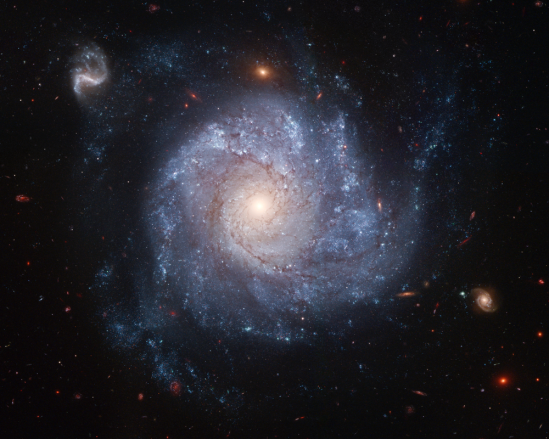A star transcended death and came back more powerful after supernova explosion

- Country:
- United States
Supernova, a super-powerful explosion that takes place at the end of a star's life cycle, is the largest explosion that takes place in the universe, leaving nothing behind. However, a team of astronomers observing a peculiar thermonuclear supernova SN 2012Z with the NASA/ESA Hubble Space Telescope were surprised to discover that the star had survived the explosion.
The team, led by Curtis McCully, a postdoctoral researcher at UC Santa Barbara and Las Cumbres Observatory, found that the surviving star was even brighter after the supernova than it had been before. The findings provide new details about the origins of some of the most common, yet mysterious, explosions in the universe.
Type Ia supernovae are one of the important tools to measure cosmic distances and the universe's expansion rate, making them vitally important to astronomy. However, they are poorly understood.
In this study, SN 2012Z was a strange type of thermonuclear explosion, sometimes called a Type Iax supernova, which are the dimmer, weaker cousins of the more traditional Type Ia. Because they are less powerful and slower explosions, some scientists have theorized that they are failed Type Ia supernovae. The new observations confirm this hypothesis, according to the researchers.
"We were expecting to see one of two things when we got the most recent Hubble data. Either the star would have completely gone away, or maybe it would have still been there, meaning the star we saw in the pre-explosion images wasn’t the one that blew up. Nobody was expecting to see a surviving star that was brighter. That was a real puzzle," said McCully.
The team believes that the half-exploded star got brighter because it puffed up to a much bigger state. The supernova wasn't strong enough to blow away all the material, so some of it fell back into what is called a bound remnant. Over time, they expect the star to slowly return to its initial state, only less massive and larger.
The findings are published in The Astrophysical Journal.










